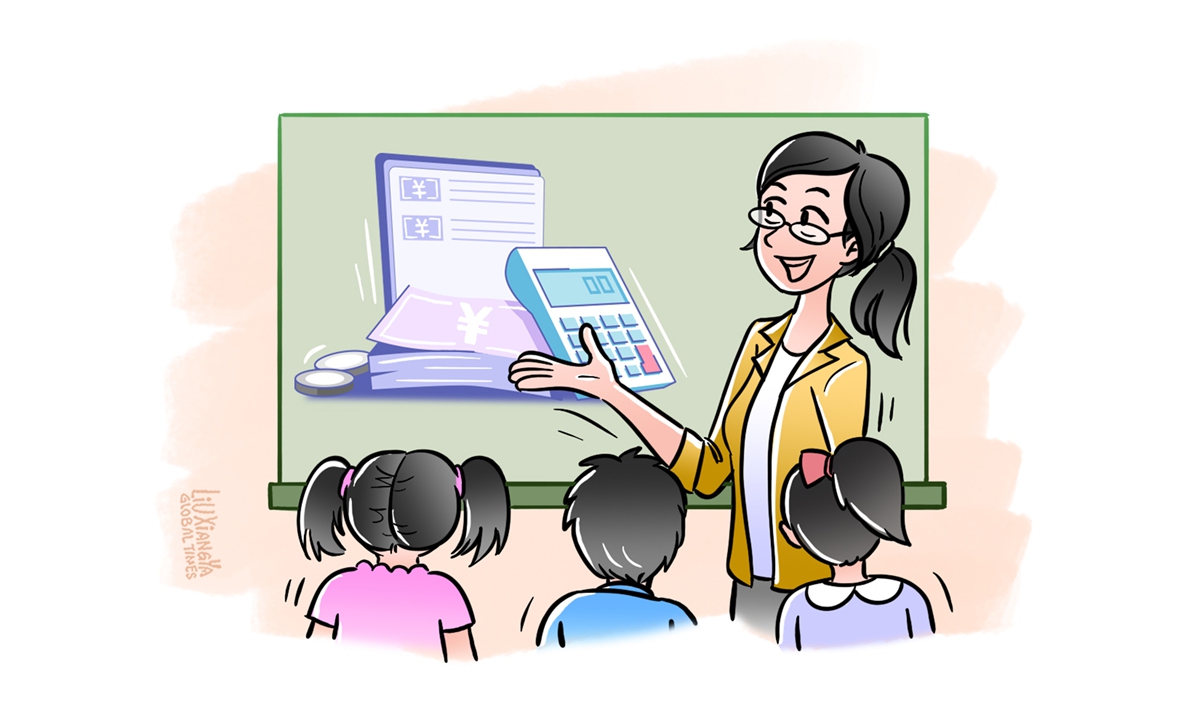
Illustration: Liu Xiangya
"Isn't money just stored in the mobile phone?" Due to the development of the mobile internet and mobile payments, more and more children are not dealing with money physically. The digital native generation is paying, borrowing and saving (if they ever do) on their mobile phones.
To help this generation develop good habits for saving and spending money, we must create more opportunities for them to spend physical money, especially during primary school.
For primary school students, when they need to buy food or drinks at school, they usually don't reach into their pockets for cash, but rather click on their digital watch to pay. In some primary schools, for security reasons, students are not allowed to bring cash with them. As a result, they assume that it is the digital watch or their parents' mobile phones that store money.
As for more complicated issues such as teaching them where the money comes from and how to deal with currency, such as changing a 100 yuan note into smaller notes or getting change, can be challenging for younger generations.
Mobile payments are an advantage for China, with the current penetration rate reaching 86 percent, according to data released by the Payment and Settlement Department of the People's Bank of China in April.
Many children rarely handle physical money, engaging instead in online transactions such as purchasing game items or exchanging virtual coins through electronic payment channels, experts said. The shift from tangible paper money to even more abstract forms of digital currencies in games, adds multiple layers of abstraction to the concept of money. Once real currency is converted into virtual currency within applications, it becomes further shrouded and difficult for children to conceptualize its real value.
In reality, many children are gifted 100 yuan ($13.78) cash notes in red envelopes during Chinese New Year, making this their only chance to touch real money. In everyday life, they rarely have the chance to deal with real money.
By contrast, adults who are not part of the digital native generation have their own intuitive sense for money. After all, when it comes to money, take 10,000 yuan for instance, the figure that people see on their screens and the stack of money in their hands are totally different for them.
This reality does not mean that it should be the new norm for children growing up to be total strangers to real money. If the digital native generation lacks an intuitive sense for money, the potential impact could be huge.
Math teachers at primary schools in Baotou, North China's Inner Mongolia Autonomous Region, Hanzhong in Northwest China's Shaanxi Province and Taiyuan in North China's Shanxi Province shared with the Global Times that they have three to four classes in late first grade or second grade to teach students about money.
In textbooks, students can see images of all the paper notes for the various denominations of yuan as well as jiao and fen coins. They also need to convert among units: from jiao to yuan, from jiao to fen and from yuan to fen and calculate the prices of goods. While in the sixth grade, students will spend two classes to learn about percentages, which partly covers bank interest when saving money.
Innocent children lack a sense of money. For them, money is just numbers, simple as that. As for questions where money comes from, how one can make money or how money is exchanged for goods or spent, children in primary schools still have huge gap to fill in. That's why they ask "Isn't money stored in mobile phones? You can just scan the QR code and close the deal."
Some teachers have heard complaints from parents that their children have no clue about what amount of money can buy what amount of goods in real life, nor do they know how tough it is to make money. As a result, these students do not cherish or respect all they have.
We are reviewing this question, not because we want to blame mobile payments, but because we really need to help children, or the digital native generation, to better learn about money, cherish the hard-won possessions bought by their parents, and understand the logic of financing, saving, spending and investing, which is definitely necessary in their lives.
Experts have recommended that primary schools organize regular flea markets or shopping street for students to practice using money. By dealing with cash, students can get to learn about how to spend money and making change. Children also need to learn to manage their own petty cash, saving up their yasuiqian (red pocket money) to buy something they have longed for.
The author is a reporter with the Global Times. [email protected]
URL: https://www.seeglobalnews.com/read-3826.html